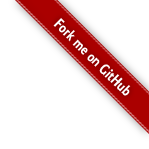Whew, well it’s been a monumentally busy development week on the new Elgg 1.0 codebase. The whole team has been working hard putting things together, and I’ve written so much cool stuff its hard to know where to begin.
Much of the really cool stuff I’ve been working on has been under the hood (XML-RPC, PAM, API etc), but I’ll start with giving a brief summary of what I was working on today – plugin administration.
As with Elgg Classic, Elgg 1 supports plugins modules. However, these modules can be turned on and off by the administrator (in much the same way as wordpress plugins can be). They can also have settings edited.
There are two things as a plugin writer to do to take full advantage of this:
Manifests
Manifests tell Elgg a little bit about your plugin. Your plugin will still work without them, but I highly recommend you use them.
Simply create a file called manifest.xml in your plugin’s top level directory that looks something like this:
<?xml version="1.0" encoding="UTF-8"?>
<plugin_manifest>
<field key="author" value="Marcus Povey" />
<field key="version" value="1.0" />
<field key="description" value="My first plugin!" />
<field key="website" value="http://www.marcus-povey.co.uk/" />
<field key="copyright" value="(C) MyCorp 2008" />
<field key="licence" value="GNU Public License version 2" />
</plugin_manifest>
Per-plugin settings
These let you provide some admin controlled configuration options for your plugin. Adding these is relatively simple.
- Create a file in your plugin’s view folder called
settings/PLUGINNAME/edit.php, where PLUGINNAME is the name of your plugin’s directory in the mod hierarchy.
- Fill this file with the form elements you want to display together with internationalised text labels. Note: you don’t need to add a save button or the form, this will be handled by the framework.
- Set the
name attribute in your form components to param[VARNAME] where VARNAME is the name of the variable. These will be saved as metadata attached to a plugin entity. So, if your variable is called param[myparameter] your entity (which is also passed to this view as $vars['entity']) will be called $vars['entity']->myparameter.
Here is an example of this view:
<p>
<?php echo elgg_echo('myplugin:settings:limit'); ?>
<select name="params[limit]">
<option value="5" <?php if ($vars['entity']->limit == 5) echo " selected=\"yes\" "; ?>>5</option>
<option value="8" <?php if ((!$vars['entity']->limit) || ($vars['entity']->limit == 8)) echo " selected=\"yes\" "; ?>>8</option>
<option value="12" <?php if ($vars['entity']->limit == 12) echo " selected=\"yes\" "; ?>>12</option>
<option value="15" <?php if ($vars['entity']->limit == 15) echo " selected=\"yes\" "; ?>>15</option>
</select>
</p>
Fun! fun!
 It has been an exciting (not to mention very busy) few weeks, and we are now entering the final approach towards the release of Elgg 1.0.
It has been an exciting (not to mention very busy) few weeks, and we are now entering the final approach towards the release of Elgg 1.0.